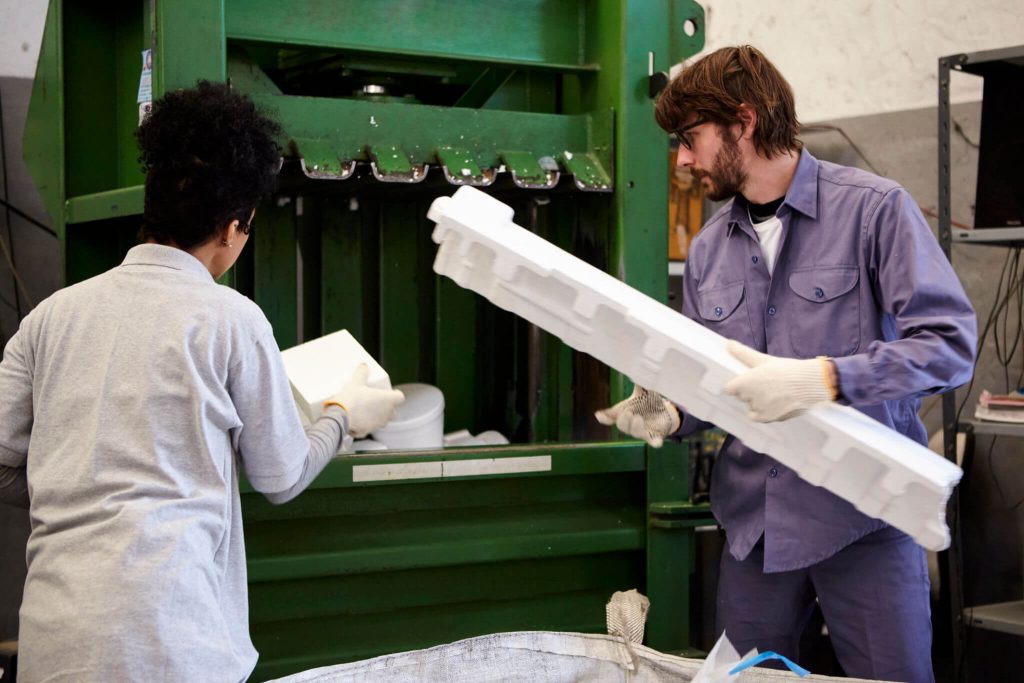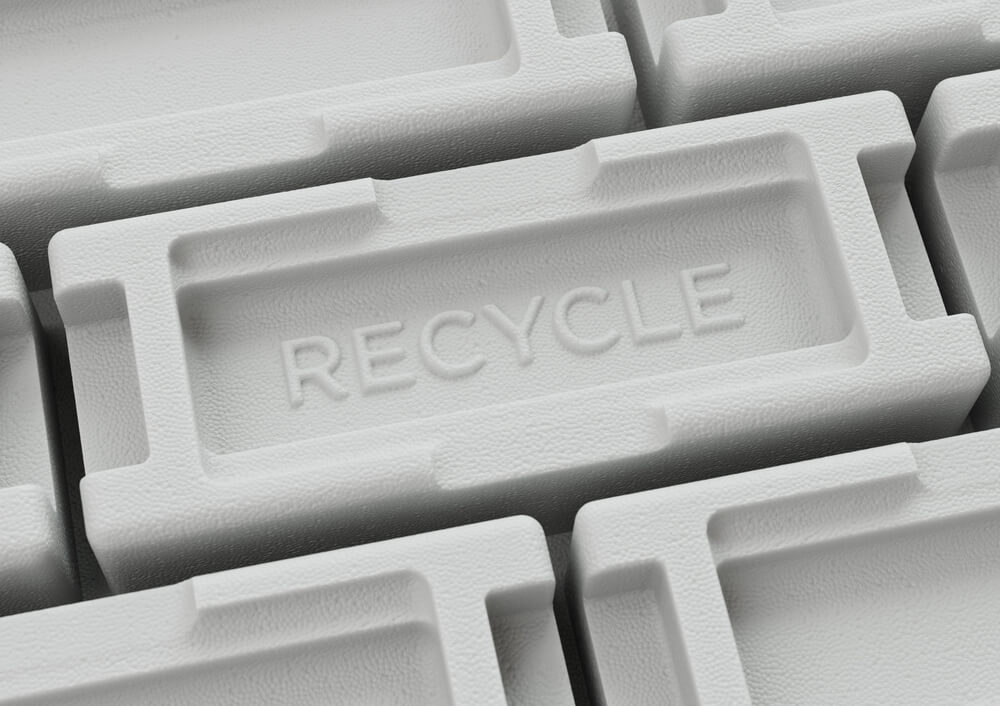Environmental
Is Styrofoam Recyclable? Guide to Disposal & Environmental Impact

Styrofoam, technically known as polystyrene foam, is a lightweight material commonly used for packaging and insulation. Its popularity stems from its excellent cushioning properties and cost-effectiveness. However, while Styrofoam serves various practical purposes, it poses significant environmental challenges. A common question that arises is: “Is Styrofoam recyclable?” The answer is complex. Although technically recyclable, Styrofoam is often considered not recyclable in many municipal programs due to the high costs and specialized processes required to recycle it effectively.
The environmental impact of Styrofoam is substantial. Being non-biodegradable, it can persist in the environment for hundreds of years, contributing significantly to landfill waste and ocean pollution. Moreover, during its production and degradation processes, harmful chemicals can leach into ecosystems, posing threats to wildlife and human health.
Given these concerns, recycling Styrofoam becomes crucial despite the challenges involved. Recycling can reduce the volume of waste in landfills and minimize environmental harm by repurposing the material into new products such as picture frames or crown moldings. Understanding why recycling Styrofoam is important helps drive initiatives towards more sustainable practices and encourages innovation in recycling technologies that could make this process more feasible on a larger scale.
The Challenges of Recycling Styrofoam (Why It’s Not as Simple as It Seems)
Recycling Styrofoam, a common form of polystyrene foam, presents significant challenges that are not immediately apparent. One of the primary issues with recycling Styrofoam is its non-biodegradable nature. Unlike organic materials that decompose naturally over time, Styrofoam persists in the environment for hundreds of years, contributing to long-term waste problems.
The environmental challenges associated with Styrofoam recycling stem from its composition and structure. This material is composed mainly of air (about 95%) making it incredibly lightweight but voluminous. This characteristic poses logistical difficulties in collection and transportation since large volumes need to be transported despite their minimal weight, resulting in higher costs and energy consumption.
Moreover, the recycling process itself is complicated by contamination issues. Styrofoam often comes into contact with food residues or other contaminants that make it unsuitable for direct recycling without extensive cleaning processes. These additional steps further increase the cost and complexity of recycling efforts.
Finally, there are limited markets for recycled Styrofoam products compared to other recyclable materials like paper or metals. The lack of demand discourages investment in the infrastructure needed to support widespread Styrofoam recycling programs.
While the idea of recycling all forms of waste is appealing, the specific challenges associated with Styrofoam highlight why it’s not as straightforward as it seems. Addressing these issues requires innovative solutions and increased awareness about sustainable alternatives to reduce reliance on this persistent pollutant.
Where Can You Recycle Styrofoam? Finding Local and Nationwide Solutions

Recycling styrofoam, technically known as polystyrene, can be a bit tricky due to its lightweight and bulky nature. However, with growing awareness and environmental concerns, more solutions are becoming available for those looking to recycle this material. Local recycling centers often have specific days or designated areas for collecting polystyrene waste. It’s important to check with your municipal waste management services to see if they offer such programs.
In addition to local options, there are nationwide initiatives that provide drop-off sites for foam waste. Organizations like the Alliance of Foam Packaging Recyclers (AFPR) maintain a list of locations where consumers can bring their styrofoam for recycling. These centers typically accept clean packing peanuts and other types of foam packaging materials.
Some large retail chains also participate in recycling programs by providing collection bins specifically for styrofoam products. Before heading out, it’s advisable to call ahead and confirm the types of foam accepted at these locations.
By utilizing these resources, you can contribute positively to reducing landfill waste and promoting sustainable practices in your community. Always ensure that the styrofoam is clean and free from contaminants before dropping it off at any recycling location.
Sustainable Alternatives to Styrofoam
In the quest for more sustainable living, reducing the use of Styrofoam has become a critical focus. As one of the most common yet environmentally harmful materials, Styrofoam presents significant challenges due to its non-biodegradable nature and contribution to pollution. Fortunately, there are several sustainable packaging alternatives available that can help mitigate these issues.
Eco-friendly materials such as recycled paper, cornstarch-based packing peanuts, and mushroom packaging are gaining traction as viable substitutes. Recycled paper is not only biodegradable but also versatile for various packaging needs. Cornstarch-based packing peanuts offer a compostable option that dissolves in water without leaving harmful residues. Similarly, mushroom packaging harnesses natural processes to create a sturdy yet biodegradable product that breaks down quickly after disposal.
Biodegradable packaging options extend beyond just replacing Styrofoam; they also encompass innovative designs that reduce waste by using fewer resources or repurposing existing materials. By choosing these alternatives, businesses and consumers alike can significantly reduce their environmental footprint while supporting a circular economy.
Transitioning to sustainable packaging alternatives requires collective effort and commitment from manufacturers, retailers, and consumers. By prioritizing eco-friendly materials over traditional Styrofoam products, we can make meaningful strides towards reducing waste and fostering a healthier planet for future generations.
Tips for Proper Disposal of Styrofoam If Recycling Is Not an Option
When recycling is not an option, disposing of Styrofoam responsibly is crucial to minimizing its environmental impact. Here are some effective waste management tips for Styrofoam that can help reduce its presence in landfills.
Firstly, consider reusing Styrofoam whenever possible. Many pieces, especially those used for packaging, can be repurposed in creative ways around the home or office. For example, they can be used as insulation for plants in cold weather or as fillers for bean bags and cushions.
If reuse isn’t feasible, check if there are any local organizations or businesses that accept Styrofoam donations. Some shipping companies and craft stores may take clean foam packing peanuts and blocks to reuse them in their operations.
Another responsible disposal method involves breaking down larger pieces of Styrofoam into smaller ones to reduce space in your trash bin. This doesn’t eliminate the waste but helps manage it more effectively until a better disposal option becomes available.
Finally, stay informed about community waste management programs as some areas occasionally host special collection events where residents can drop off materials like Styrofoam for proper disposal.
By following these tips and staying proactive about responsible disposal methods, individuals can significantly contribute to reducing the landfill impact from foam waste.
The Future of Styrofoam Recycling
The future of Styrofoam recycling is poised for significant transformation, driven by advancements in technology and proactive industry efforts. As environmental concerns continue to rise, the demand for effective recycling solutions has never been more pressing. One of the most promising future trends in recycling technology is the development of advanced foam processing methods. These innovations aim to break down Styrofoam into reusable materials more efficiently, reducing waste and energy consumption.
Moreover, industry efforts to improve recyclability are gaining momentum. Companies are investing in research to create eco-friendly alternatives and enhance the recyclability of existing products. Collaborative initiatives between manufacturers and environmental organizations are also underway, focusing on creating closed-loop systems that ensure Styrofoam products can be recycled back into new items seamlessly.
As these innovations take shape, they hold the potential not only to reduce landfill contributions but also to set new standards for sustainability within the packaging industry. By embracing these changes, we can look forward to a future where Styrofoam recycling is not just a possibility but a practical reality that contributes positively to our environment.
Making Informed Decisions About Using and Disposing of Styrofoam Responsibly
In conclusion, making informed decisions about the use and disposal of Styrofoam is crucial for both environmental sustainability and personal responsibility. As consumers, understanding the impact of Styrofoam on our environment can guide us in choosing alternatives that are more eco-friendly. Whenever possible, opting for reusable or biodegradable products can significantly reduce the amount of waste generated.
For situations where Styrofoam use is unavoidable, it is important to be aware of local recycling programs that accept polystyrene products. Many communities have specific drop-off locations or recycling events dedicated to collecting Styrofoam for responsible processing. By participating in these programs, we can help ensure that this material does not end up in landfills or contribute to pollution.
Furthermore, supporting companies and initiatives focused on developing sustainable packaging solutions can drive innovation and encourage more widespread adoption of environmentally friendly practices. Education and awareness are key components in fostering a culture that prioritizes sustainability over convenience.
By taking these steps, individuals can play an active role in mitigating the negative impacts associated with Styrofoam while promoting a healthier planet for future generations.
